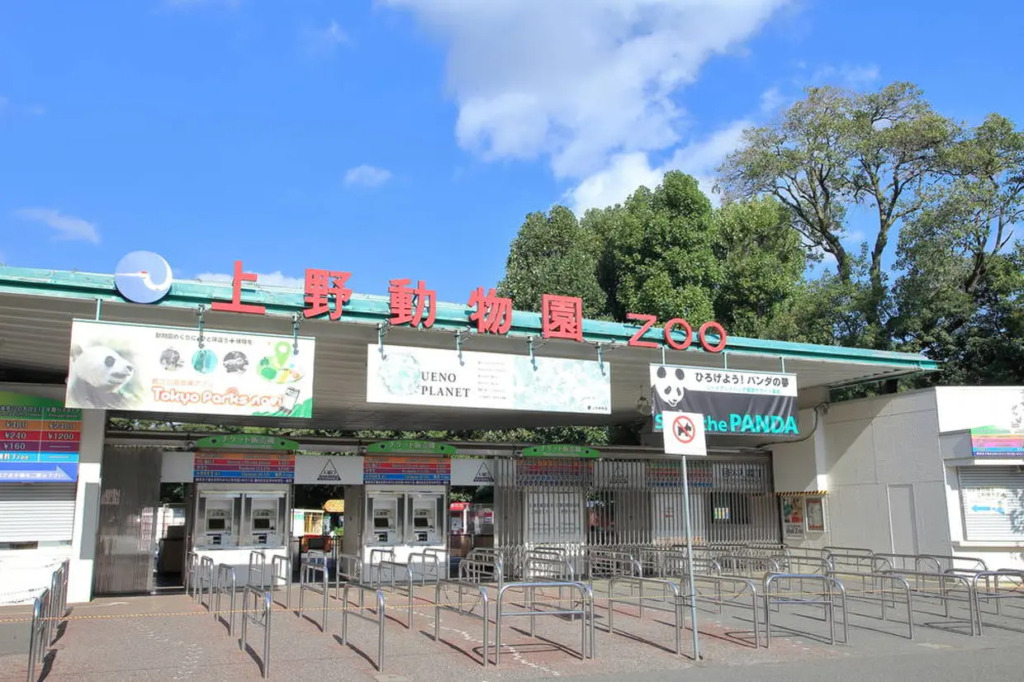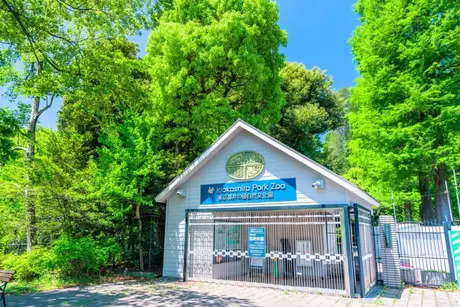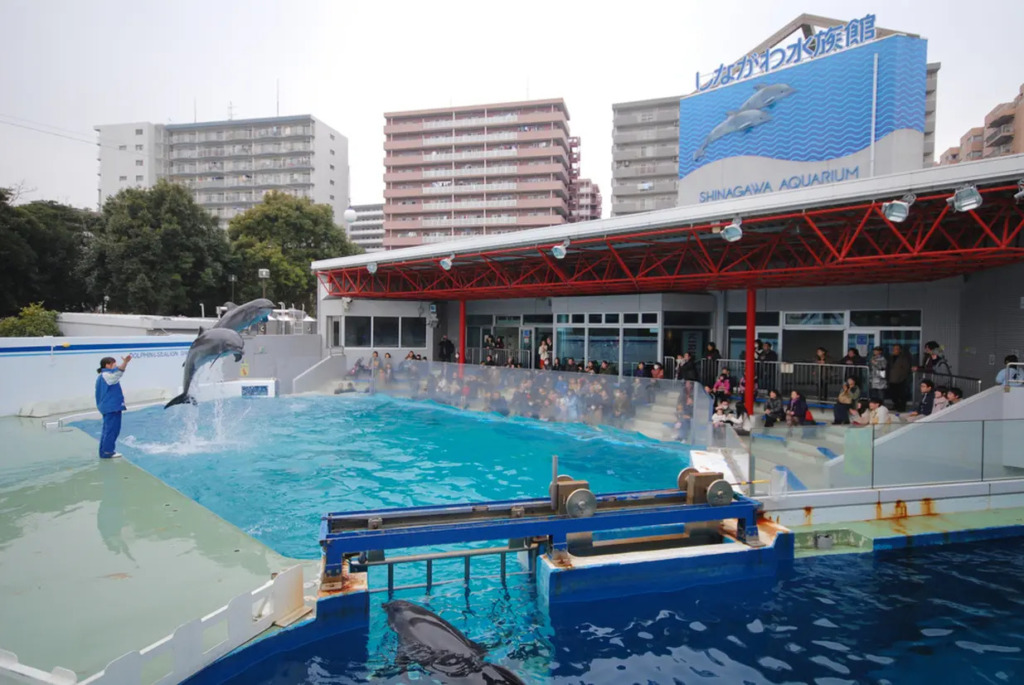Tokyo is home to a variety of zoos and aquariums, each with its own unique charm. This page introduces some of the zoos and aquariums that we recommend you visit when sightseeing in Tokyo! Many of Tokyo’s zoos and aquariums have parks and shopping malls in the surrounding areas, so there are many attractions to enjoy in the neighborhoods after sightseeing. We hope you will enjoy your visit to these zoos and aquariums along with your shopping and strolling in the parks!
*The information listed may be subject to change. Also, some facilities require advance reservations. Please be sure to check the official website before visiting.
Click here to learn more about Tokyo.
Ueno Zoological Gardens (上野動物園)

The Ueno Zoo (Ueno Zoological Gardens), opened in 1882, was the first zoo in Japan and is located in Ueno Park. It is located in Ueno Park and is home to 3,000 animals of approximately 300 different species.
The Ueno Zoo has two major features. The first is that it keeps and exhibits giant pandas. There are only three places in Japan where pandas are bred, and many people visit the Ueno Zoo for the pandas.
The second feature is that Ueno Park, where the zoo is located, is full of historical buildings such as Ueno Toshogu Shrine and other sightseeing spots. There are also art museums and cafes such as Starbucks, so even after enjoying the zoo, you can stop by the surrounding spots and have a good time. It is a great spot for a date or a stroll, so be sure to visit the zoo and the surrounding area together ✨.
Official website: https://www.tokyo-zoo.net/english/ueno/index.html
For those who want to know more about Ueno Park
Tama Zoological Park (東京都多摩動物公園)

Tama Zoological Park is located in one of the richest natural areas in Tokyo. It was built in 1958 as a second Ueno Zoo concept in response to the increasing number of visitors to the Ueno Zoo after World War II, and is currently home to more than 300 animals.
It was the first zoo in Japan to allow visitors to view animals without fences, and with over 50 hectares of land, you can see animals that can only be seen here in Japan, as well as those that are considered to be rare in the world. Tama Zoological Park is the best place to see animals living in their natural habitat!
Official website: https://www.tokyo-zoo.net/english/tama/index.html
Hinotonton Zoo (Hamura Zoo) (羽村市動物公園)

Hinotonton Zoo (Hamura Zoo) opened in 1978. Although not a large zoo, it is a homey animal park that is just the right size for small children to walk around and is crowded with many families on holidays.
One of the attractions of the zoo is that visitors can directly touch guinea pigs, chicks, and other animals, as well as unique exhibits themed on fairy tales from around the world. Seasonal events and animal feeding experiences are also held from time to time.
Official website: https://hamurazoo.jp/
Edogawa Natural Zoo (江戸川区自然動物園)

At the park’s petting area, visitors can interact with rabbits, guinea pigs, and other small animals. Likewise, goats and sheep are free to roam around the space, allowing visitors to interact with the animals at their leisure.
There are about 60 other rare animals. Admission is free, so we recommend this as one of the best places to stop by if you are in the neighborhood.
Official website: https://www.edogawa-kankyozaidan.jp/zoo/
Inokashira Park Zoo (井の頭自然文化園)

Located in a corner of Inokashira Onshi Park, this is a historic nature park opened in 1942. The park is home to wildlife, plants, waterfowl, amphibians, and fish in their natural habitat, which can be enjoyed along with the seasonal scenery of Inokashira Park. There are many facilities where visitors can touch and observe small animals such as guinea pigs and squirrels up close, and a playground and sculpture garden are also available for a full day of leisurely play.
Official website: https://www.tokyo-zoo.net/english/ino/index.html
Sumida Aquarium (すみだ水族館)

Located directly under the Skytree in Asakusa, Tokyo, Sumida Aquarium is a popular facility that has become a hot topic of conversation for its photogenic space and unique exhibition methods of penguins and chin sea eels. Since it is completely indoors, it is recommended even on rainy or bad weather days, and since it is not very large, it is easy to drop by.
Unlike ordinary aquariums, you can get very close to the creatures and learn about their ecology in detail. A particular highlight is the Penguin Zone, where penguins swim in one of the largest pools in Japan! Many Magellanic penguins live freely in an open-air indoor pool with a water volume of about 350 tons, and you can observe them up close and personal.
Alcohol is also sold at the aquarium, which is rare for an aquarium. There are plenty of chairs set up throughout the aquarium, so we recommend spending a leisurely time looking at the aquarium with a drink in hand ✨.
Official website: https://www.sumida-aquarium.com/en/index.html
Shinagawa Aquarium (しながわ水族館)

Shinagawa Aquarium is an aquarium with the theme of “interaction” with the sea and rivers, and was opened in 1991 at the urging of local people. The attraction of the aquarium is its calm and serene atmosphere, where visitors can get up close and personal with dolphins, sea lions, penguins, otters, and other cute creatures that live near the water, not to mention tropical fish, jellyfish, and other underwater animals.
Located on the south side of Shinagawa Ward, the nearest station is Ōmorikaigan Station, six stops away from Shinagawa Station on the Keikyu Main Line bound for Kurihama. The aquarium is located in the Shinagawa Kumin Park (Shinagawa Ward Residents’ Park), a large comprehensive park loved by locals and where visitors can enjoy barbecues, cycling, and many other activities.
After enjoying the aquarium to the fullest, visitors can play physically in the park, spread out a picnic lunch, and enjoy the whole day.
Official website: https://www.aquarium.gr.jp/
Maxell Aqua Park Shinagawa (マクセル アクアパーク品川)

Maxell Aqua Park Shinagawa is a state-of-the-art aquarium that fuses creatures with sound, light, and images. The museum is popular for its powerful dolphin performances, the theme of which changes with the seasons, and the photogenic space that extends throughout the building. Maxell Aqua Park Shinagawa is located near Shinagawa Station, one of Tokyo’s most popular office districts, for easy access. Attached to the Shinagawa Prince Hotel, Shinagawa’s city hotel, the two-story facility features dynamic attractions and a stage for dolphin shows, making it hard to believe that it is indoors.
Official website: https://www.aqua-park.jp/en/aqua/index.html
Sunshine Aquarium (サンシャイン水族館)

Sunshine City, a commercial complex consisting of various facilities such as an observatory, shopping center, offices, event space, restaurants, hotel, museum, and theater, is located in Ikebukuro, the heart of the city. One of these facilities is the Sunshine Aquarium, which extends over the roof of the building. The aquarium consists of three areas: “Sky Journey”, “Waterfront Journey” and “Ocean Journey”.
The aquarium is a popular tourist spot with easy access from JR and subway stations.
Since its opening in 1978, the aquarium has attracted much attention for its fascinating exhibits, including the introduction of rare sea creatures such as clione and lantern eels. The Sunshine Aquarium was the first aquarium in Japan to recreate the marine environment of a coral reef habitat in an aquarium. In addition to large aquatic animals such as sunfish and stingrays, the aquarium also keeps frogs, snakes, turtles, mammals, and other water-dwelling creatures in an environment that is as close to their habitat as possible.
Official website: https://sunshinecity.jp/en/aquarium/
Tokyo Sea Life Park (葛西臨海水族園)

Opened in 1989, Tokyo Sea Life Park (Kasai Rinkai Suizokuen) is located in Kasai Rinkai Park facing Tokyo Bay in Edogawa-ku, Tokyo. Here, visitors can encounter rare fish from oceans around the world. Particularly famous is the “Aqua Theater,” where you can see a large school of tuna swimming in a 2,200-ton donut-shaped tank. The sight of tuna swimming at great speed through the large tank is a sight to behold!
The Penguin Corner, said to be one of the largest in Japan, is also popular for its up-close observation of penguin life.
Official website: https://www.tokyo-zoo.net/english/kasai/index.html


